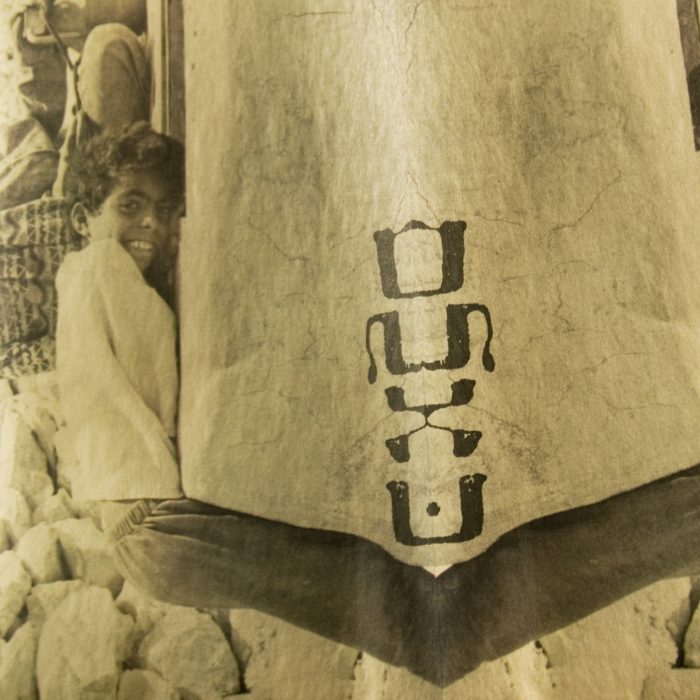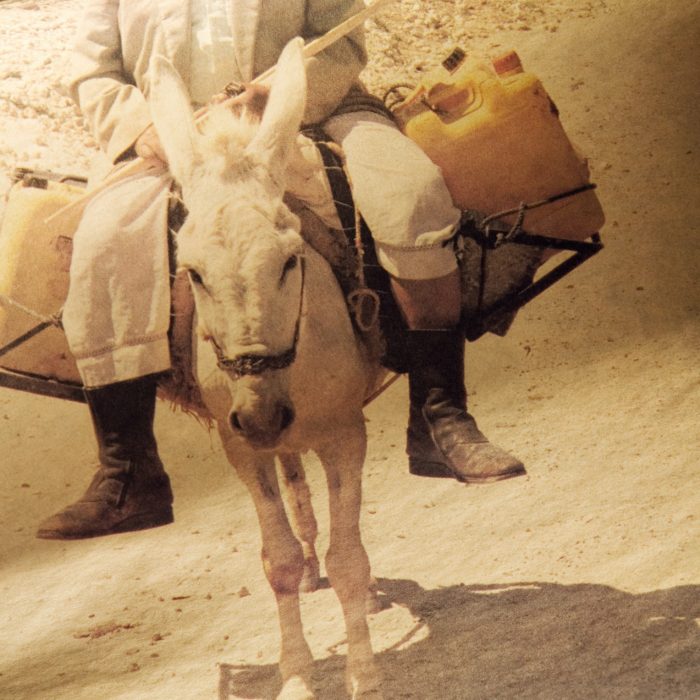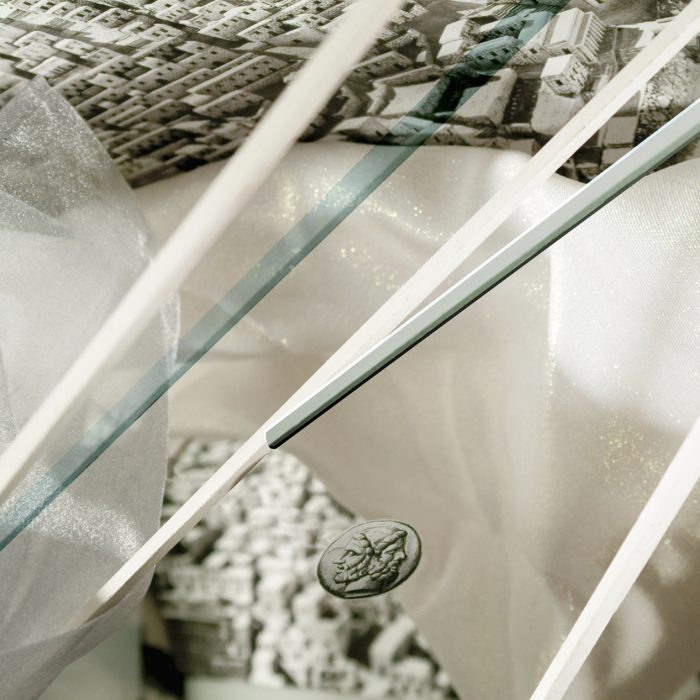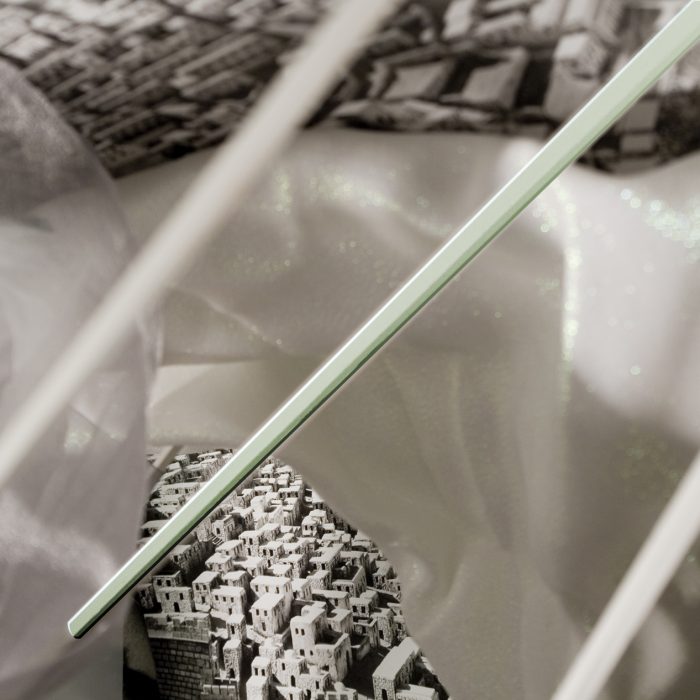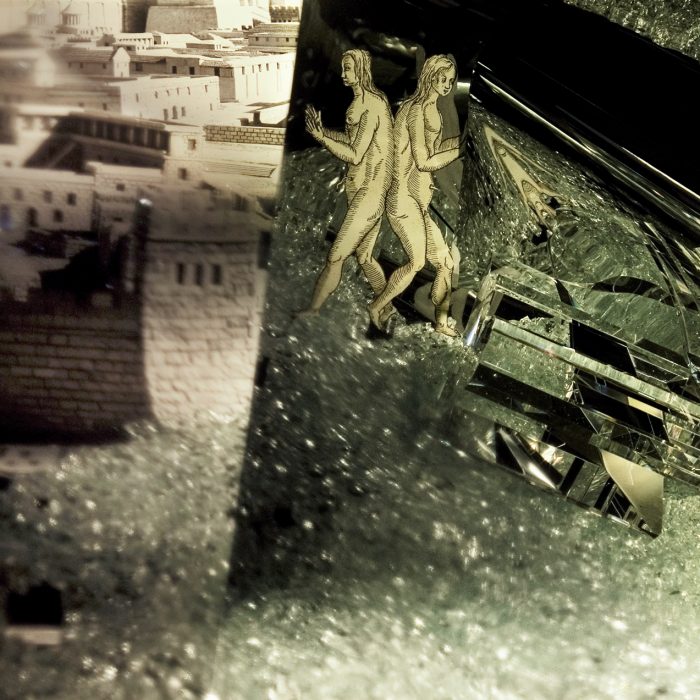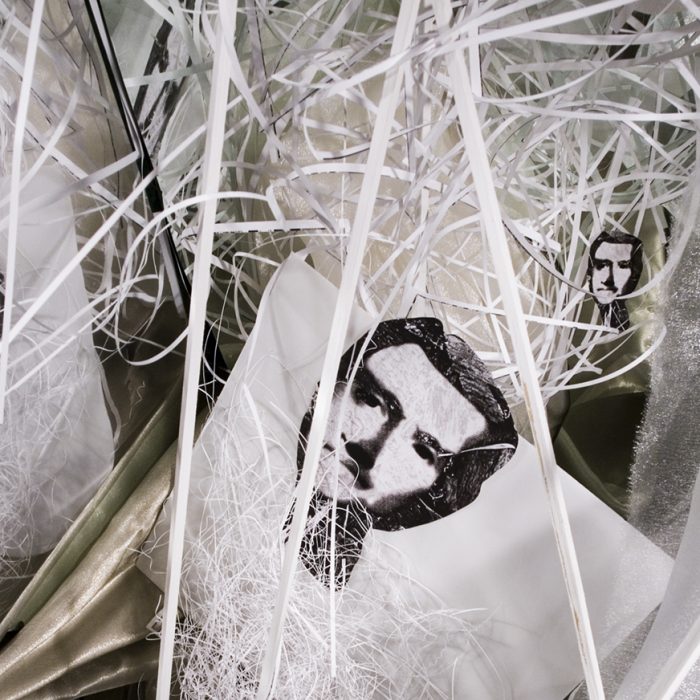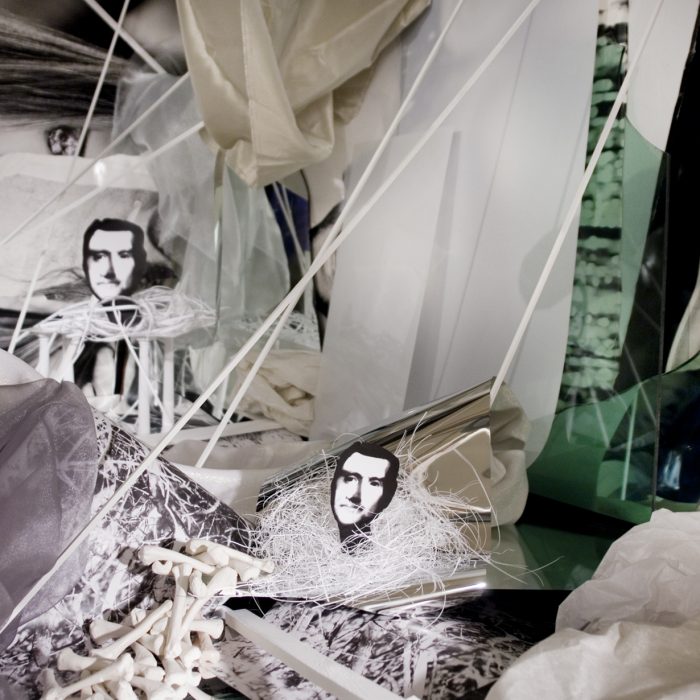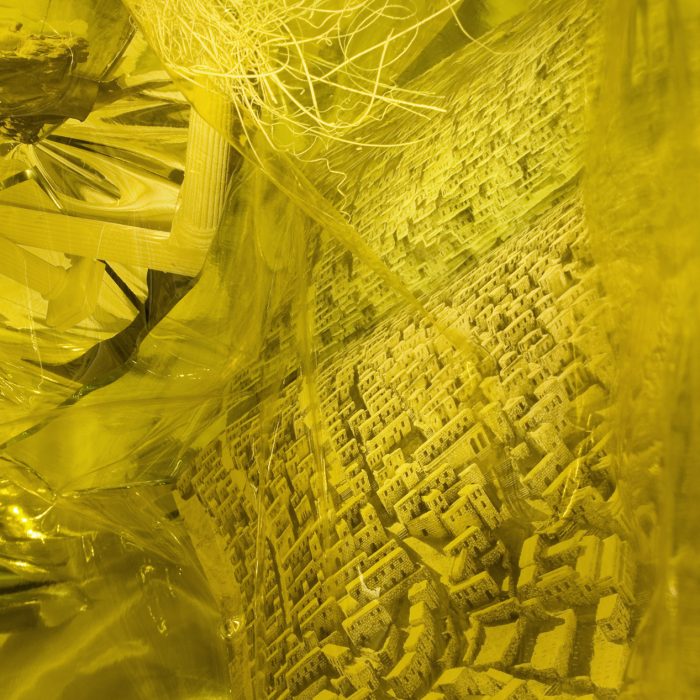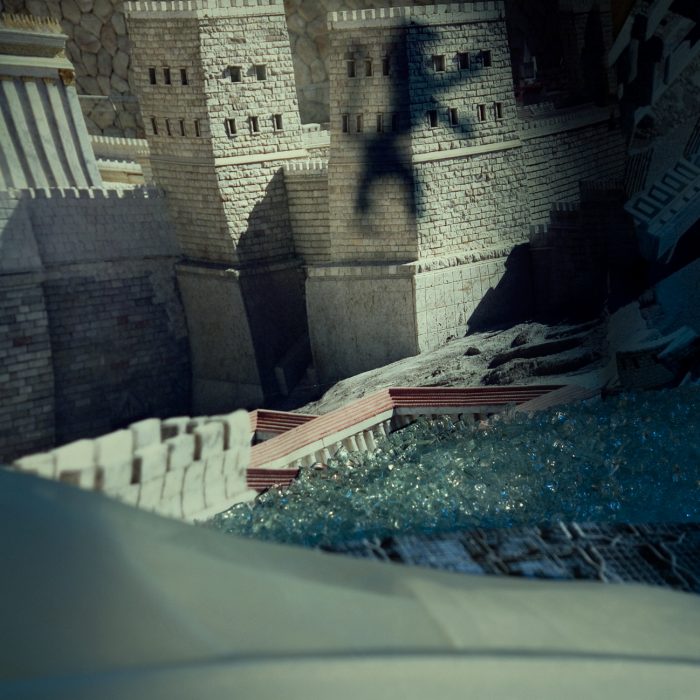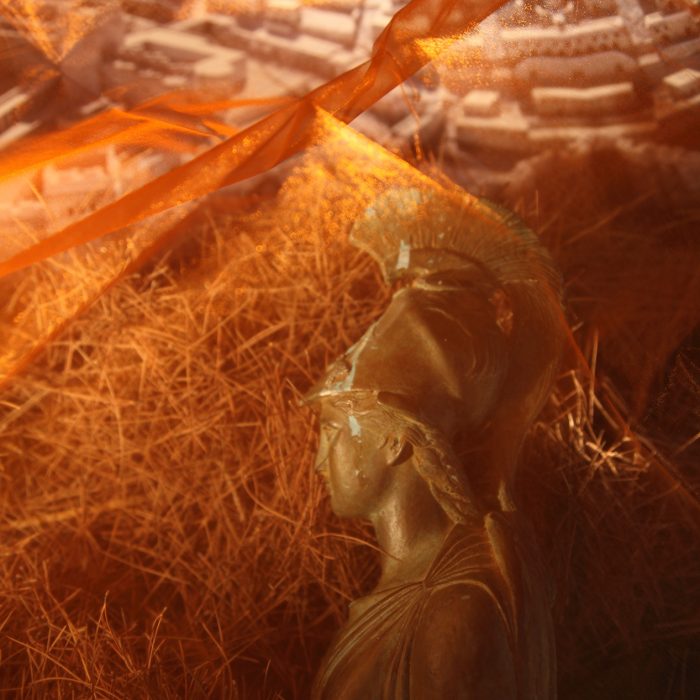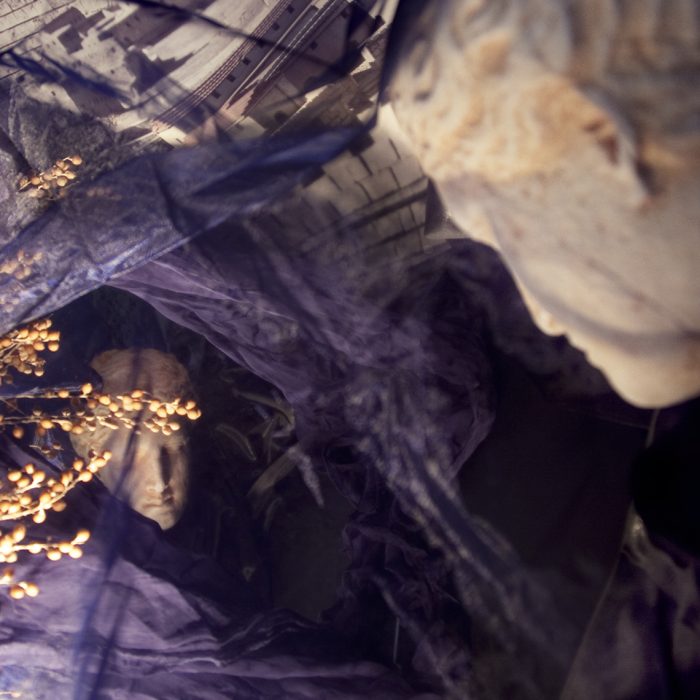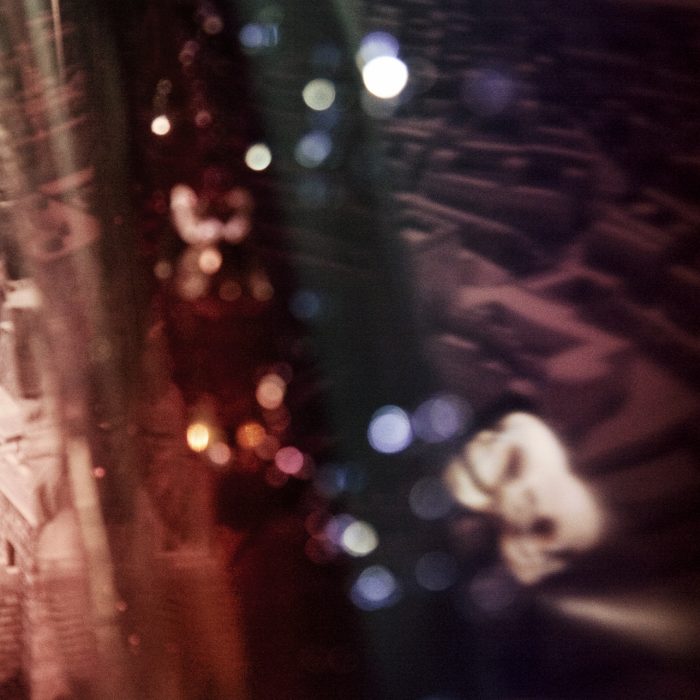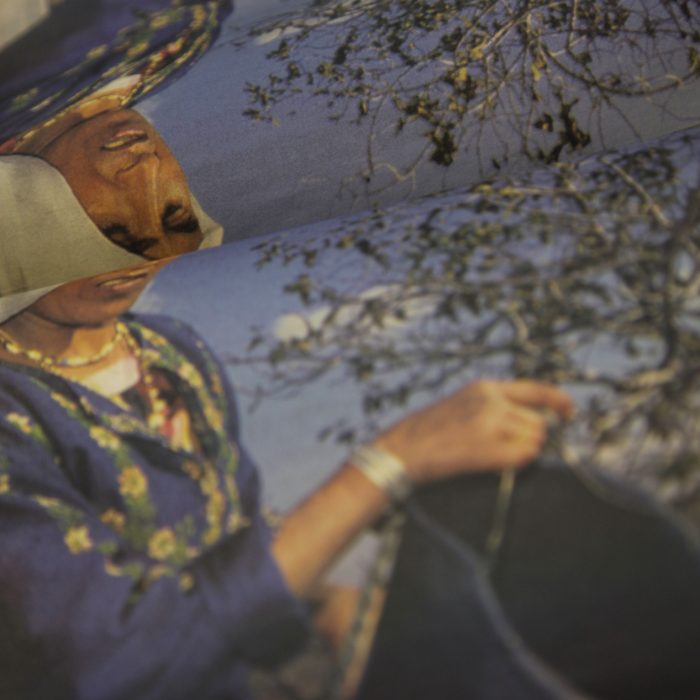J’lem
FAMILY, RELIGION and STATE (FRS) are three social structures that fill an overlapping abstract space. A state can contain both families and multiple religions, a religion incorporates families and states and a family can participate in or reject religion. More often then not, conflict arises between the points of this polygon, which creates a considerable challenge for co-existence in the Middle East. Religious beliefs and ideological orthodoxy have systematically been stated and reinstated as a unifying force. They are time and again at the root of our failing. Paradoxically, even the decision to reject ideologies is an ideology in itself. Faced with these choices, what should one choose?
One of the oldest cities in the world, Jerusalem has always been infused with fracture and duplicity, which carry on to this day in the city’s fabric and leaders. As reverent home to three of the world’s major religions, Jerusalem embodies Foucault’s idea of a heterotopia — an impossible space where parallel contradictory layers exist.{1} The fractured photo, Intoxicating sovereignty (jerusalem Fall afternoon) depicts Jerusalem in the time of the Second Temple (66 CE) — when revolt against the occupying Romans led to its eventual destruction four years later. The Janus figure in the top left corner of the image is the Roman god of beginnings and endings, a protector able to see both past and future. Ironically, the protectors of the city were to be its destroyers.
I’ve been exploring Hofstadter’s idea of the self-referential loop{2} using reflective surfaces in my constructs. It is often unclear whether an image is the thing itself, its reference, or its reflection (mise en abyme). In the latest photos I avoid the traditional horizon, and the compositions become purposefully disorienting. A photographic image can be thought of as a belief system in itself, and as such, it is a structure infused with doubt.
………………………………………………………………………………………………….
{1} Azoulay Ariella, Death’s Showcase: The Power of Image in Contemporary Democracy, The MIT press, 2003, p. 181
{2} Douglas R. Hofstadter, Gödel, Escher, Bach: An Eternal Golden Braid, Published by Basic Books, 1999, p.695
An extended version of this text appeard in Input Journal.
…

